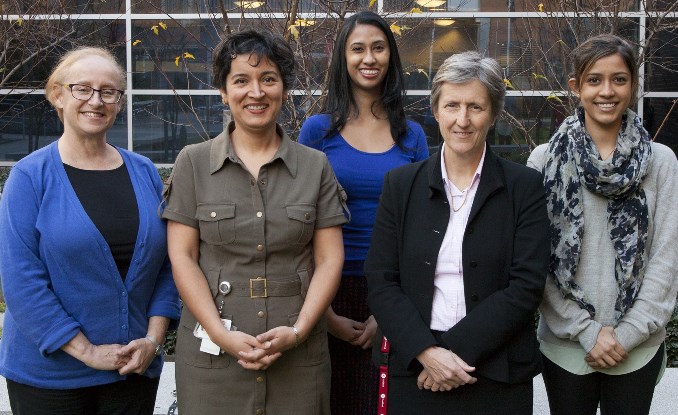 |
| The Skin Tissue Culture Laboratory group, Alfred and Monash. L-R: Dr Marisa Herson, Dr Shiva Akbarzadeh, Ms Michelle Paul, Ms Heather Cleland, Director Victorian Adult Burns Service (VABS); Ms Lipi Shukla, PhD student |
The research group's proposed method was efficient in producing an in vitro near native Human Skin Equivalent using the chosen “off the shelf” porous scaffold (Integra®). The same principles and promising outcomes should be applicable to other biodegradable porous scaffolds, combined with autologous cells, for use in wound treatment.
Reference: Paul M, Kaur P, Herson MR, Cheshire P, Cleland H, Akbarzadeh S. Use of clotted human plasma and aprotinin in skin tissue engineering - A novel approach to engineering composite skin on a porous scaffold. Tissue Eng Part C Methods. 2015 May 21. [Epub ahead of print]
Research group: www.med.monash.edu.au/surgery/alfred/research/skin-tissue-lab.html

No comments:
Post a Comment
Thankyou for your comment. We moderate all messages and may take a little time to review your comment. Please email inquiries to ccs.comms@monash.edu.